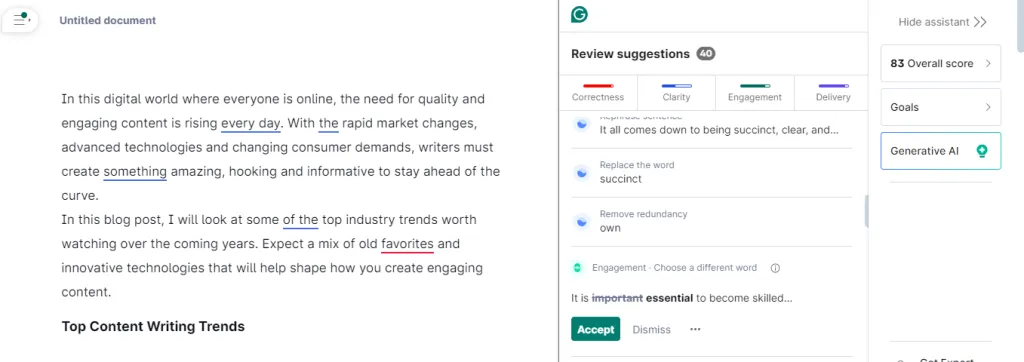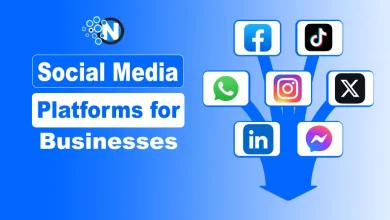Top 10 Content Writing Trends for 2025

At the start of 2025, our office buzzed with one big question: What’s really working in content today?
With a team of over 50 writers, 30 of whom bring more than five years of hands-on experience, we decided not to guess. Instead, we turned our daily grind into a live research lab.
Every week from January to March, we came together, shared results across industries, debated trends, and scribbled breakthroughs across whiteboards and sticky notes. It wasn’t just ideas – it was content strategy in action.
For nearly three months, our writers became detectives and drove performance in finance, healthcare, tech, and e-commerce. By mid-March, when Google rolled out its Core update, everything clicked. The patterns we’d been tracking were not just theories, they were confirmed truths.
This guide captures what we discovered through that collaborative sprint. Real trends, refined by experience, and validated by results.
We’re excited to share what’s actually working right now!
What is Content Writing?
Content writing is all about creating written material for online platforms like websites, blogs, social media, and more. It’s the art of using words to connect with an audience, deliver value, and often inspire action.
Whether it is a blog post, a product description, or even an Instagram caption, content writing plays a huge role in how brands and individuals communicate online.
It is not just about filling pages with words – it is about telling a story, solving problems, and building trust. Quality content writing is clear, engaging, and is about the people you’re speaking to. It makes readers want more!
Top 10 Content Writing Trends in 2025
Therefore, it is important to stay updated with the latest content writing trends for creating content that captures attention and delivers real value.
Below are the top content writing trends that our content team has brought to you after proper research.
1. Semantic SEO
Semantic SEO has latest concept to a cornerstone of effective content strategy. Search engines now prioritize understanding the relationships between words, concepts, and user intentions rather than simply matching keywords.
Semantic SEO Implementation:
- Focus on satisfying user intent rather than keyword density.
- Use schema markup to provide context clues to search engines.
- Build comprehensive topic clusters that cover subjects in depth.
- Incorporate natural language processing principles in content development.
- Develop content that addresses related questions and natural topic extensions.
The rise of semantic search means content creators must think about topics holistically, considering the network of information users need rather than isolated keywords. This approach not only improves visibility but also creates more valuable, comprehensive resources that establish genuine authority.
2. The Rise of AI
The concept of artificial intelligence is no longer futuristic. It is here and causing a stir in the world of content creation.
AI writing assistants like Grammarly are helping writers to create error-free and high quality content that is easy to read and consume. Writers are not going to be replaced by AI. It is becoming a powerful tool to enhance their work.
Strategic Implementation:
- Use AI as a collaborative tools for research, brainstorming, and first drafts.
- Focus on developing your unique voice and perspective that AI cannot replicate.
- Utilize AI for technical optimization while preserving the emotional character only humans can create.
The most successful content creators view AI not as a replacement but as an amplifier of human creativity and expertise.

3. Short Form Content
Short-form content is booming due to people’s short attention spans and the popularity of apps like TikTok and Instagram Reels. This is about coming up with innovative methods to say a lot with fewer words, not about giving up on depth.
Video shorts, interactive content forms, and microblogging are all becoming more popular. People desire information that can be absorbed quickly and readily. But keep in mind that creating short-form content does not mean simplifying your topic. It all comes down to being succinct, clear, and engaging in your own narrative.
Subject: ………………………………
💡Pro Tip: It is important to become skilled at being brief without compromising on meaning. To get the most impact, use compelling hooks, powerful imagery, and clear calls to action.
4. User Generated Content
User-generated content is an integral content writing trend to marketing success in this digital era. With the rise of social media platforms and blogs, individuals have gained the ability to share their opinions, experiences, and ideas globally.
Implementation Strategies:
- Create frameworks that encourage and showcase customer stories.
- Develop campaigns that invite meaningful participation.
- Use UGC thoughtfully to align with brand values.
- Balance professional content with community contributions.
UGC builds genuine connections while reducing content creation burdens, creating a win-win for brands and their communities.
5. Personalization
The days of generic content are over. People are hungry for customization. They look for content that directly addresses their wants, needs, and interests. This requires a thorough understanding of your target market.
- Use data analytics to understand audience segments in depth.
- Create comprehensive buyer personas that guide content development.
- Implement dynamic content that adapts to user behavior.
- Develop content paths that address different stages of the customer journey.
The secret to success is to establish trusting bonds with your audience through relevant and valuable content.
6. SEO with a Human Touch
SEO is still essential for increased visibility in search engines. However, using technical language and keyword stuffing is no longer the only thing. Google is prioritizing information that is interesting, informative, and of high quality.
Modern SEO Approach:
- Focus on comprehensive topic coverage rather than keyword density.
- Create content that answers searcher questions thoroughly.
- Build quality backlinks through valuable, shareable content.
- Optimize for user experience metrics like dwell time and engagement.
Maintain a balance between following SEO best practices and creating valuable content for your readers. Keep in mind that search engines are becoming smarter, so focus on delivering an exceptional user experience.
7. The Importance of Authenticity
Customers are starting to doubt marketing communications more and more. They desire sincere and open communication from brands.
Authenticity Elements:
- Develop a consistent brand voice grounded in genuine values.
- Share behind-the-scenes insights that humanize your brand.
- Address challenges and mistakes transparently.
- Emphasize your unique perspective and expertise (EEAT: Experience, Expertise, Authoritativeness, and Trustworthiness).
- Regarding your brand’s mission and principles, be truthful when creating content for your website, blog, or social media profiles.
8. Diversity and Inclusion
Inclusivity has moved from a nice-to-have to an essential content characteristic. Content that represents diverse perspectives not only reaches broader audiences but also reflects the complexity of the world more accurately.
Inclusive Content Practices:
- Review content for unintentional biases or stereotypes
- Include diverse voices and perspectives in your content creation process
- Use inclusive language that welcomes all readers
- Consider accessibility needs in content formats and presentation
The most effective inclusive content feels natural rather than performative to demonstrate genuine commitment to representation.
9. Voice-Optimized Content
With the proliferation of smart speakers and voice assistants, optimizing content for voice search has become a critical consideration. Voice queries now account for over 30% of all searches, fundamentally changing how content needs to be structured and delivered.
Voice Optimization Strategies:
- Format content to answer specific questions conversationally.
- Focus on natural language patterns rather than traditional keyword structure.
- Create featured snippet-worthy content that voice assistants can easily reference.
- Develop content that addresses the local intent common in voice searches.
- Structure FAQs to match how people verbally ask questions.
Voice-optimized content tends to be more conversational, question-focused, and direct than traditional written content writers will require to think about how information sounds when spoken aloud.
10. Interactive Experiences
Static content is giving way to interactive experiences that invite reader participation. From embedded polls and calculators to choose-your-own-adventure storytelling, interactive content boosts engagement while providing more personalized experiences.
Interactive Implementation:
- Develop content with decision points that create customized paths.
- Integrate assessment tools that provide personalized recommendations.
- Build interactive infographics that reveal information based on user interaction.
- Design quizzes that both entertain and educate while capturing valuable insights.
- Create calculators that help readers understand complex concepts through their own data.
Subject: ………………………………
📌 Fact: Interactive content typically sees 2-3 times higher engagement rates than static content, while also providing valuable data about audience preferences and interests.
Final Thoughts – The Future of Content Writing
This was all about the content writing trends that we learn from our mutual discussions and experience after the Google Core Update. Pay attention to new developments in technology and trends. Try out different platforms and formats. Above all, never stop developing and learning.
You can create content that inspires, engages, and informs your audience by adopting these trends and experimenting with different creative ideas.




